Refilling inkjet printer cartridges
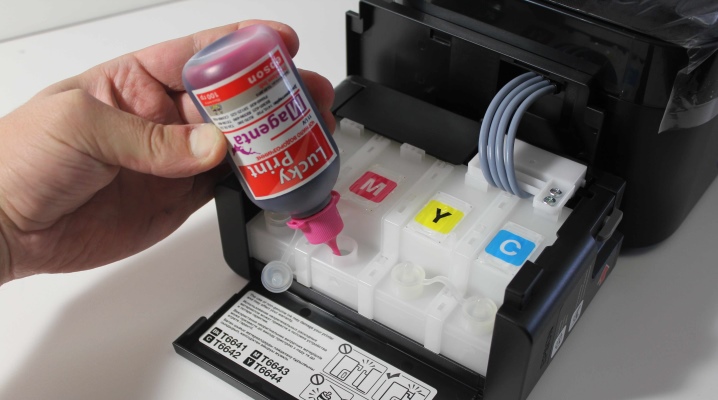
Cartridges are consumables for inkjet printing devices, which are most often designed for single use. It is important to take into account that their price can be commensurate, and sometimes even exceed the cost of the printer or MFP itself. In this case, we are talking about the marketing reception of companies producing office equipment and consumables. In such conditions, the relevance of self-refilling of inkjet printer cartridges, including at home, is growing.
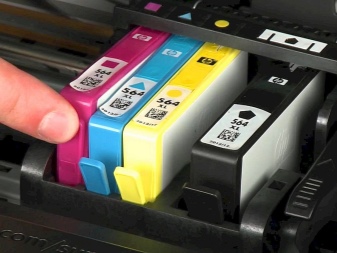

What do you need?
Unfortunately, companies specializing in the production of modern office equipment often do not initially provide for the possibility of refilling cartridges for inkjet printers and multifunctional devices... In other words, after the ink runs out, it is necessary to replace the consumable as a whole. In the overwhelming majority of cases, this entails tangible financial costs. In practice, however, there is an alternative to such an expensive purchase.
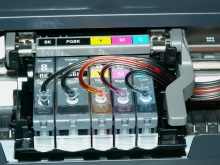
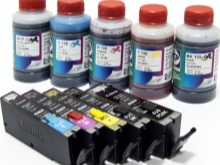
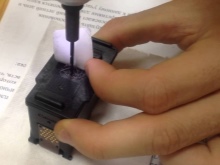
The way out of this situation will be to restore the efficiency of the equipment with your own hands. In order to restore the paint supply yourself, you will need the following materials.
- Empty cartridges themselves.
- Syringes (usually 1 for black and 3 for color inks) or a refill kit. The latter allows you to quickly perform all the necessary actions, even with minimal experience or no experience at all. These kits include a special clip, syringes, labeling sticker and puncture tool, and instructions for use.
- Paper towels or napkins.
- Narrow tape.
- Toothpicks to determine the color of the filling material.
- Disposable gloves.
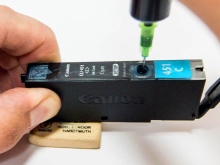
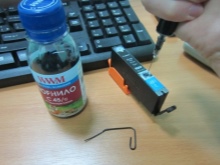
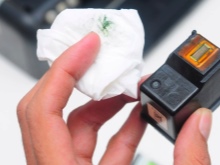
One of the key points is correct choice of ink. In this case, it all depends on what properties of this filling material the user pays special attention to. The task in such cases is complicated by the impossibility of checking the quality of paints before purchasing them. Today manufacturers offer the following types of ink for refilling cartridges of the described category.
- Pigmentcontaining in their composition solid particles of organic and inorganic origin, the size of which reaches 0.1 microns.
- Sublimationcreated on a pigment basis. It is important to keep in mind that this type of consumables is intended for printing on film and special paper.
- Water soluble... Unlike previous types, these inks are made from dyes that are soluble in water and can quickly penetrate into the structure of any photographic paper.
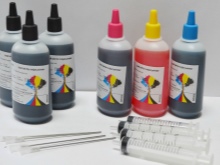
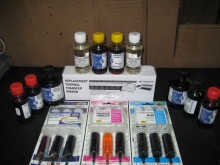
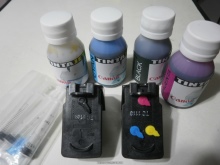
Before refueling an inkjet cartridge, you should decide which ink will be used. We are talking about both the original paint and alternative versions compatible with a particular model. The latter can be released by third-party brands, but at the same time fully meet all the requirements.
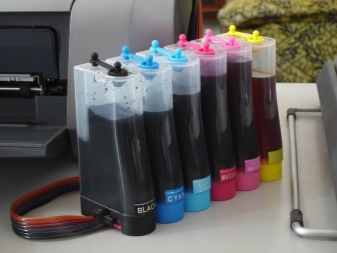
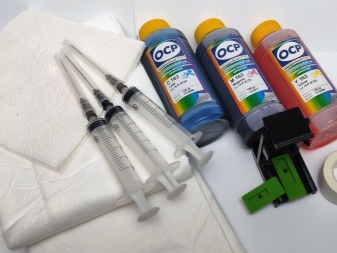
How to refuel?
Replenishing ink cartridges can seem daunting. However, with the appropriate knowledge and minimal skills, this process will not require excessive effort and significant time investment. To reduce operating costs and restore functionality to your peripheral, you will need to do the following:
- Purchase labeled ink and the tools listed above.
- Select and equip the workplace appropriately. It is strongly recommended to cover the surface of the table with paper or oilcloth, which will help protect the tabletop from the negative consequences of spilling the filling material.
- Open the printer or MFP and remove the empty ink containers. It is recommended to close the cover during refueling to prevent dust from entering the equipment.
- Wear disposable gloves to protect exposed parts of the body from paint, which is very difficult to wash off.
- Place the cartridge on a paper towel folded in half.
- With the utmost attention, study all the points of the attached instructions for a specific model.
- Remove the sticker covering the filler holes. In some situations, these may not exist, and you will have to do them yourself. Depending on the design features and dimensions of the container for the consumable, it is recommended to take care of the presence of several holes to evenly distribute the ink.
- Pierce the finished holes with a toothpick or needle. When filling the color cartridge slots, pay particular attention to the color of the ink. In this case, we are talking about turquoise, yellow and red ink, each of which must be in its place. The same toothpick will help to determine the choice of the reservoir.
- Draw paint into the syringe. It is important to take into account that in each specific case, the amount of consumable material will vary. It is also worth paying attention to the fact that foam does not form in the syringe and air bubbles do not appear. This can adversely affect the performance of the cartridge and even damage it.
- Insert the needle of the syringe into the filler hole approximately 1 centimeter.
- Slowly pour paint into the reservoir, avoiding overfilling.
- Remove the needle carefully so as not to damage the inside and body of the container. When doing this, you can blot excess ink with a napkin or paper towel.
- Thoroughly clean the contacts from traces of paint.
- After completing all the above manipulations, carefully seal the filler holes with a factory sticker or with tape prepared in advance.
- Blot the nozzles with a towel. Repeat this action until the ink stops flowing out.
- Open the cover of the printer or all-in-one and place the refilled cartridge in its place.
- Close the lid and turn on the equipment.
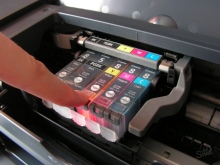
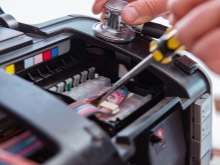
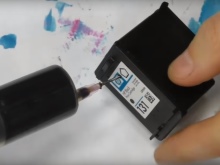
At the final stage, you will need to use the printer settings menu and initiate printing a test page. The absence of any defects indicates the successful filling of the consumable.

Possible problems
Self-refilling cartridges for inkjet printers and MFPs, no doubt, allows you to significantly reduce operating costs. It is for this reason that manufacturers of office equipment and consumables themselves are not interested in the production of devices, the performance of which can be periodically restored at minimal cost. Based on this and a number of technical nuances, certain problems may arise when refueling.
Sometimes a peripheral device may not "see" a refilled cartridge or perceive it as empty. But more often than not, users have to face the fact that after a full refueling, the printer still prints poorly.
There are several sources of this kind of trouble. However, there are also fairly effective troubleshooting methods that involve specific actions.
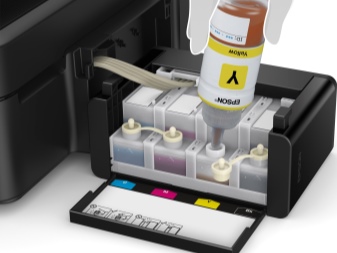
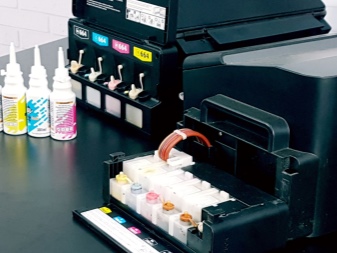
Sometimes print quality problems are caused by activated economy mode of operation of equipment. In this case, such settings can be made by the user both deliberately and accidentally. System crashes that change the configuration are also possible. Correcting the situation will require certain actions.
- Turn on the printing equipment and connect it to the PC.
- In the "Start" menu, go to the "Control Panel". Select the "Devices and Printers" section.
- In the list provided, find the peripheral device used and go to the print settings menu by clicking on the RMB icon.
- Uncheck the box next to Fast (speed priority). In this case, the item "Print quality" should indicate "High" or "Standard".
- Confirm your actions and apply the corrections made.
- Restart the printer and print a test page to evaluate the print quality.
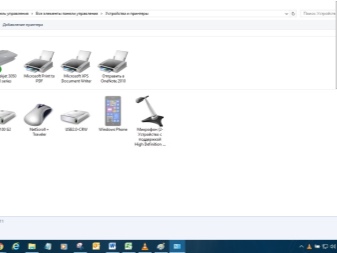
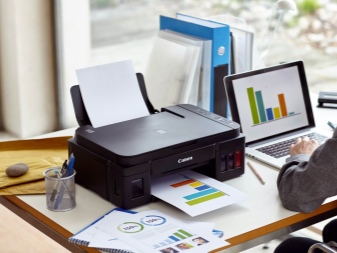
In some situations you may need software cleaning. The point is that the software of individual cartridge models provides for the function of calibrating and cleaning their components. If you have problems printing documents and images, you need to use the print head cleaning option. To activate it, you should:
- open the settings menu of the device used;
- go to the "Service" or "Service" tab, in which all the functions necessary for servicing the head and nozzles will be available, and select the most suitable software tool;
- strictly follow the program manual that appears on the monitor of a PC or laptop.
At the final stage, it remains only to check the print quality. If the result remains unsatisfactory, then you will need to repeat all the above steps several times.

Sometimes the source of problems with the operation of a serviced consumable after its full refueling turns out to be lack of tightness. In principle, users rarely encounter such malfunctions. Leakage is a consequence of mechanical damage, violations of instructions for replacement and maintenance, as well as factory defects. As a rule, the way out of this situation is to purchase a new ink tank.
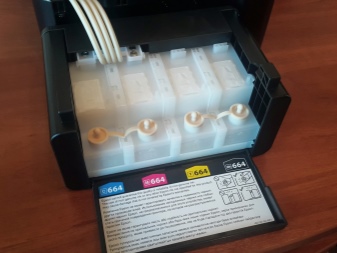
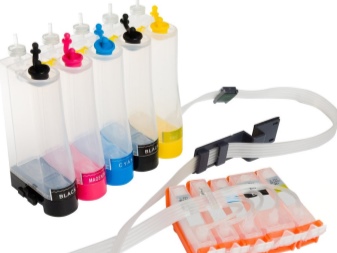
If the solutions described above turned out to be ineffective, then it is worth resorting to cleaning the pick rollers. These devices grip blank sheets of paper during the printing process. If they become dirty, defects may appear on printed documents, pictures and copies. To fix such problems, you do not need to immediately contact the service center, since everything you need can be done at home. The algorithm of actions in this case will be as follows:
- connect the printer to the PC and start it;
- remove all paper from the feed tray;
- on the edge of one sheet, gently apply a small amount of high-quality dishwashing detergent;
- place the processed side in the device, and hold the opposite end of the sheet with your hand;
- send any text file or image for printing;
- hold the sheet until the out of paper message appears.
It is important to take into account that such manipulations must be repeated several times in a row. The cleaning results and print quality are then checked by running a test page.

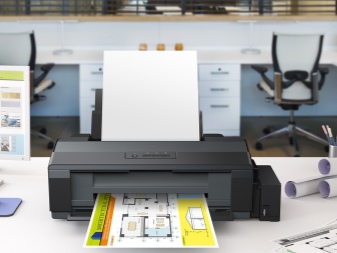
In some situations, all the options described do not lead to the desired results. This rarely happens, but you should know how to deal with the problem. The way out could be cleaning the cartridges themselves.
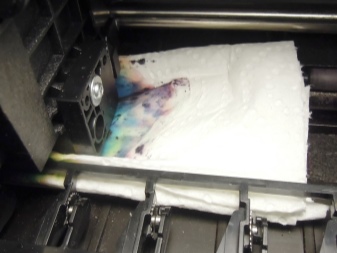
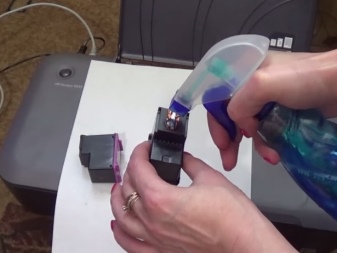
Refueling of separate inkjet printer cartridges is presented in the video below.













The comment was sent successfully.